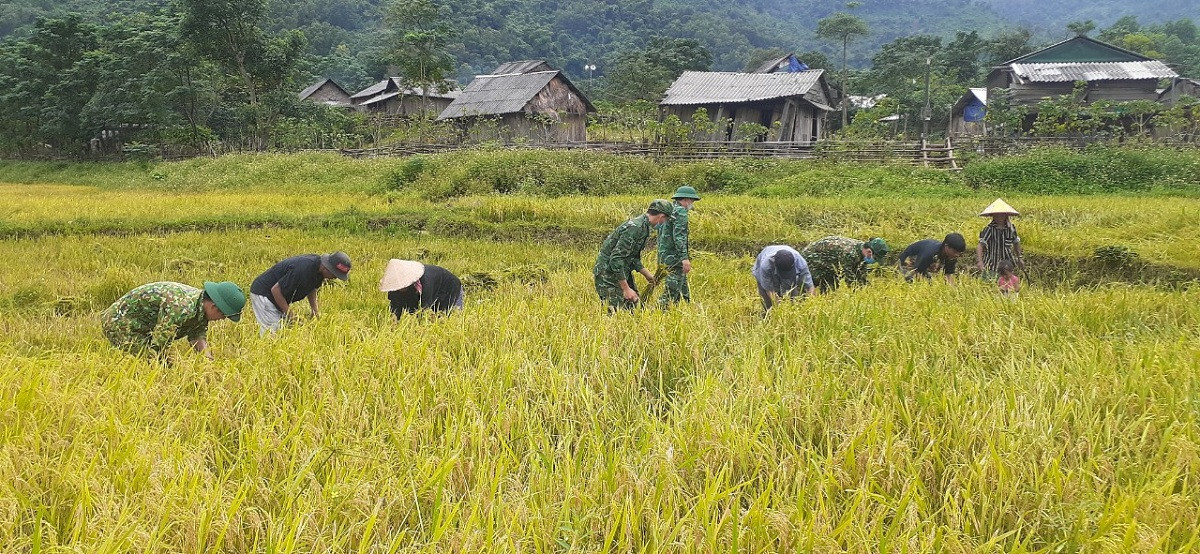
When bringing wet rice to K. Ai village, the Border Guard of Quang Binh province solve the root of the hunger of the May people.
Previously, the May ethnic people in K. Ai village of Dan Hoa commune, Minh Hoa district, Quang Binh province were hungry all year round because they mainly relied on hunting and burning forests for farming.
Understanding the hardship of local people, in 2011 the Border Guard of Quang Binh province decided to pilot a wet rice growing model in the village. In the first crop, the rice output was very high. Based on the results, the Border Guard advised the Provincial People's Committee to build a wet rice farming model to help the people of K. Ai village to escape from hunger and poverty.
With the view of helping people by giving them "fishing rods" instead of giving them "fish", in 2013, the Border Guard of Quang Binh province implemented a wet rice growing project in K. Ai village on an area of 5 hectares.
In the early days, the Border Guard instructed locals how to plow the land, soak seeds, and how to fertilize the rice plants so that they can grow well. Thanks to proper technical care, rice productivity was high, not inferior to many rice-growing localities in the delta. This year's summer-autumn crop, the wet rice fields in K. Ai village yielded 3.5 tons per hectare.
This is the crop marking the 10th anniversary of the establishment of wet rice fields in K. Ai village. After 20 harvests, the May people in K. Ai village are now good farmer.
Each year they harvest two rice crops, with an average yield of nearly 4 tons/ha. The wet rice fields have helped 138 households with over 708 people ensure food supply. In addition to have enough rice for themselves, people also have rice to store and raise livestock.
After 10 years of hardship due to harsh climate conditions, mountainous terrain, scarce field water, and especially the people's limited understanding of wet rice farming, now local people have voluntarily gone to the fields, basically grasped the process of making wet rice, especially knowing how to appreciate the rice grains that they have spent on their own sweat and effort.
According to Mr. Ho Hung, Head of K. Ai village, local people not only know how to grow wet rice, they also know how to do business, initially creating a source of income to cover their lives.
"Even though the difficulties are not yet over, we have realized that only by establishing ourselves can our lives be stable, and we cannot forever rely on the support of the State," Mr. Hung said.
The 2-crop/year wet rice model in K. Ai village built by the Border Guard of Quang Binh province has the largest area among the wet rice models deployed by the Provincial Border Guard along the western border of the province.
To help people consciously and proactively get used to wet rice farming, since 2016, the Cha Lo International Border Gate Border Guard Station has divided fields and assigned them to households.
The wet rice farming model in K. Ai village has contributed to helping people escape poverty. K. Ai is changing every day in the journey of hunger eradication and poverty reduction with the hands of the people and the sweat of the border guards.
The fact that the Border Guard helps the people grow wet rice has contributes to sedentary farming, settlement, stability and sustainability, and is also of political, economic, cultural and social significance for the locality. This is also an effective way to build new rural areas.